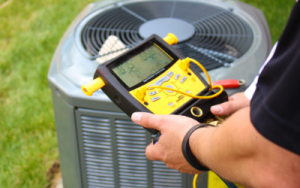Californians Deserve Safe Tap Water: Exclusive Solutions Ahead
Californians Deserve Safe Tap Water: Exclusive Solutions Ahead
Californians deserve safe tap water, a simple yet pressing need faced by many residents in the Golden State. Unfortunately, a significant number of Californians approach their kitchen taps with trepidation, fearing the quality of the water they consume. As diverse news sources have highlighted, this ongoing crisis reflects both a public health issue and a question of trust in governmental efforts.
The State of Tap Water in California
Recent reports emphasize a disconcerting reality: many communities in California lack adequate access to safe drinking water. A photo essay published by the Mercury News reveals that countless residents live in areas where they question the safety of their tap water, often resorting to purchasing bottled alternatives. This reliance not only weighs heavily on household budgets but also raises broader concerns about environmental sustainability and long-term health impacts.
The point of contention spans urban to rural areas, where infrastructural disparities lead to inconsistent water quality. For instance, while wealthier neighborhoods often enjoy well-maintained systems, lower-income communities frequently struggle with dated pipes and contaminants. The SFGate report captures this inequality, highlighting how marginalized groups are disproportionately affected, resulting in a public health crisis that begs for immediate attention.
Factors Contributing to Water Quality Issues
The factors contributing to the Californian water crisis are multifaceted:
– Aging Infrastructure: Many water systems rely on aging pipes and treatment facilities that are ill-equipped to handle current population demands.
– Environmental Contaminants: Issues such as agricultural runoff and industrial pollution seep into water supplies, raising concerns about toxins like nitrates and heavy metals.
– Policy Shortcomings: Regulatory failures, including lax enforcement of water quality standards and delayed funding for necessary upgrades, exacerbate the situation.
Experts argue that these factors intertwine, ultimately creating a precarious situation for public health. As stated in an analysis from the Bay Area, addressing these issues requires a combined effort from both state authorities and community organizations to instate trust in water systems.
Exploring Solutions: What Can Be Done?
In the face of this crisis, several proposed solutions aim to ensure safe tap water for all Californians. The following strategies have gained traction among advocates and policymakers:
– Infrastructure Investment: Increasing state investment in water infrastructure could upgrade aging systems, ensuring safe delivery to all households. Proposals for funding range from state budgets to federal support, emphasizing the urgent need for modernization.
– Community-Led Initiatives: Nonprofit organizations and local activists are leading the charge in conducting water quality testing and awareness campaigns. Collaboration between these community groups and governmental bodies could streamline efforts and guarantee direct support for those most affected.
– Public Engagement: Transparency is key to fostering trust. Engaging communities in decision-making and addressing their concerns openly can promote a sense of ownership and responsibility over local water resources.
Although news reports from various sources exhibit a sense of urgency regarding the crisis, the lack of a unified plan remains a challenge. Some communities have successfully implemented grassroots initiatives, but scaling these solutions statewide will be the true test.
The Importance of Trust in Cleanup Efforts
An essential aspect of resolving the water crisis lies in rebuilding trust between communities and their governing bodies. Many residents doubt the authenticity of cleanup efforts, as detailed in the Mercury News article. To combat this skepticism, transparency must become a norm rather than an exception. Regular updates, accessible data on water quality, and open forums for community feedback will help to bridge the gap.
Skepticism is understandable, especially given past instances of misinformation. Therefore, local governments should employ clear communication strategies and ensure consistent, reliable updates about water quality improvements.
Conclusion: A Call to Action
Californians deserve safe tap water, a right that many still struggle to access. To tackle this pressing issue, concerted efforts to modernize infrastructure, uplift community initiatives, and prioritize transparent communication must be developed. While some solutions are underway, broad consensus and action are essential to ensure that every Californian can trust the water flowing from their taps.
The water crisis symbolizes a larger narrative about equity, public health, and environmental justice in California. As efforts evolve, the commitment to providing safe, clean, and trustworthy tap water remains a pivotal responsibility for all Californians.








